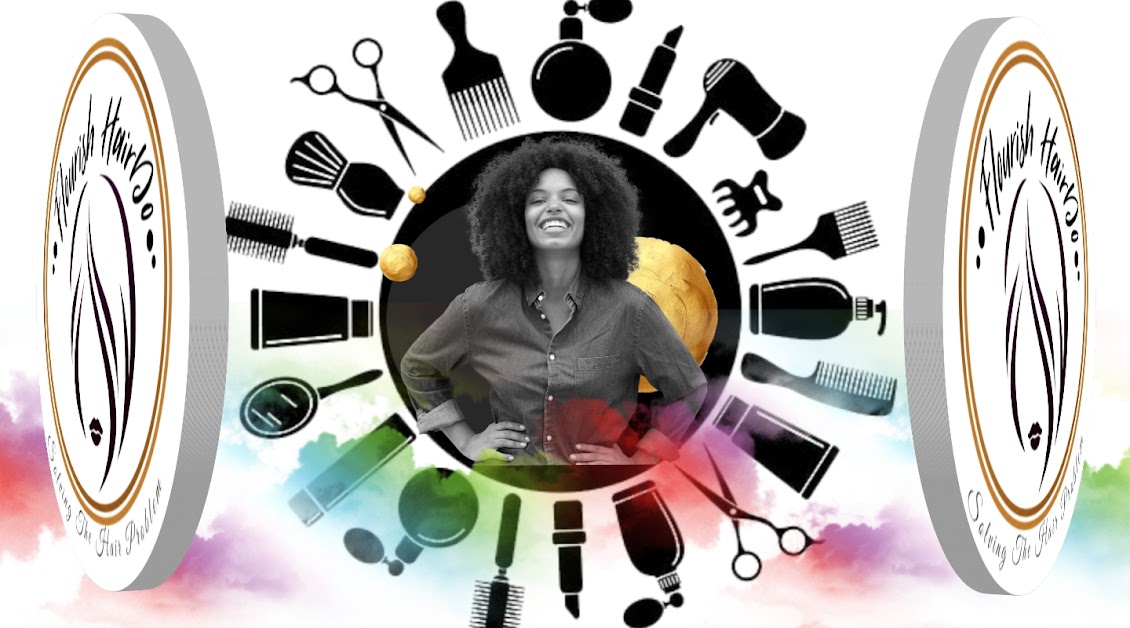I know that y'all know I'm not perfect when it comes to taking my protective styles out in good time.
But unlike fine wine, things under your sew-ins
and crochet braids do ride a parabolic shape of getting better and then getting much worse with time and improper in-between cleansing. While I may have had knots of old oil and shed hair to deal with though, I've never been in the situations Jersey stylist, Jennifer Cherilus has seen in her chair. As she told fellow naturalista Patrice Peck of Buzzfeed, 8 weeks is the MAX amount any protective style is meant to stay in place."[After] that point, you've opened yourself up to serious scalp infections, mold, and even egg-storing bugs and insects....When it gets to that point, the only solution is really cutting off all your hair and starting over."
Jennifer reported seeing people's scalps come into her salon having gone zombie colored, as their hair had become "the perfect environment for bacteria to grow and thrive...basically a breeding ground."
Thankfully there weren't any pictures of these particular customers, but it certainly was enough to drive home the need to take the proper steps in respecting the scalp and new growth under all of my braids.
That's not the whole story though.
Because I just like to raise my blood press....er, that is to say, because I delight in the contributions and inquiries of those I share the internet with, I read the comments. And as might have been expected, fear of parasites, floods of bacteria, and protective styles in and of themselves abounded.
Now as we all know, opinions are like fleeting frightened glimpses into our own mortality—everybody has them. But what's frustrating is that opinions based on unwillingness to accept information, or on jumping to prejudiced conclusions still carry so much weight. And all of that weight tends to be shouldered by those of us actually getting it right. Even if you're not a coily, or a protective stylista, you know that the tighter the curl, the more societal pressure is on us to change for supposed "hygienic reasons". The onus is always on us to prove, again and again and again that NO, our hair is not inherently dirty, NO, there is no reason that natural growth should be considered unprofessional, and yes, we would notice if there were something LIVING IN THERE.
Ironically, sometimes the more you learn about something that has the potential to be unhealthy or dangerous, the more afraid of it we can get! We're just coming off of Halloween's 'Check your kiddos' candy for poison' season, and that's based off of ONE deranged individual's murderous life insurance scam from OVER FORTY YEARS AGO. Heck, even yours truly isn't immune. I learned about stonefish way too early in life and every wet rock until I turned 12 was highly suspect.
"I'm ONTO YOU, Maurice." - 9 year old April, probably
However, knowledge is too often interspersed with apocrypha, especially when it comes to hair, and EXTRA-specially when it comes to women's hair. How many times have we heard the spiders/maggots/traveling circus troupe in the beehive hairdo story? Yet at the same time, here we have an amazing industry insider telling us what's come into her chair. The instinct to protect coily protective style integrity is strong, but I'm not about that 'dismiss what the professionals say' life.
So what's the answer here? How do we marry legitimately crucial cautionary tales with preventing rumors running wild?
The short answer is disclaimers in bolder type, or boxed off squares like this one. The long answer is at the root of the problem in education.
One of my biggest pet peeves with the educational system, is that there are several factors in most public schools that explicitly mandate and implicitly encourage teaching to tests rather than teaching critical thinking. And unfortunately, that schooling has contributed to a culture of people, myself included (occasionally, cough cough) skimming what they read for information rather than deep reading. For a lot of the listicles we read for fun, this isn't an issue. But for articles like this one that lives in the worlds of being a quick read AND a professional's take about potentially serious problem in the most extreme of situations, people are still just picking out the keywords 'Protective styles', 'Bacteria', and 'Parasites' and having that be their takeaway.
What's the use of taking notes if they're the WRONG NOTES?
As much as it sucks that there's not a simple answer or fix, the most I can do is try to read things as critically as possible, INCLUDING checking sources, publish dates, and the ways statistical terminology and vernacular English diverge enough to spread half-truths. I encourage everyone to share curl fails, professionally and nonprofessionally observed, to spread awareness about the possibilities of extreme lack of care, and I encourage non-curlies to educate themselves on what we go through with a CRITICAL eye towards what's actually being said. Fight the fear...but check Google before you ask anyone to do your homework for you.
Curlies, when you talk about your hair, what's the one thing EVERYONE seems to take away no matter what else you've said? Unburden yourselves in the comments!





No comments:
Post a Comment
Thanks for sharing your thoughts.. We cherish it...